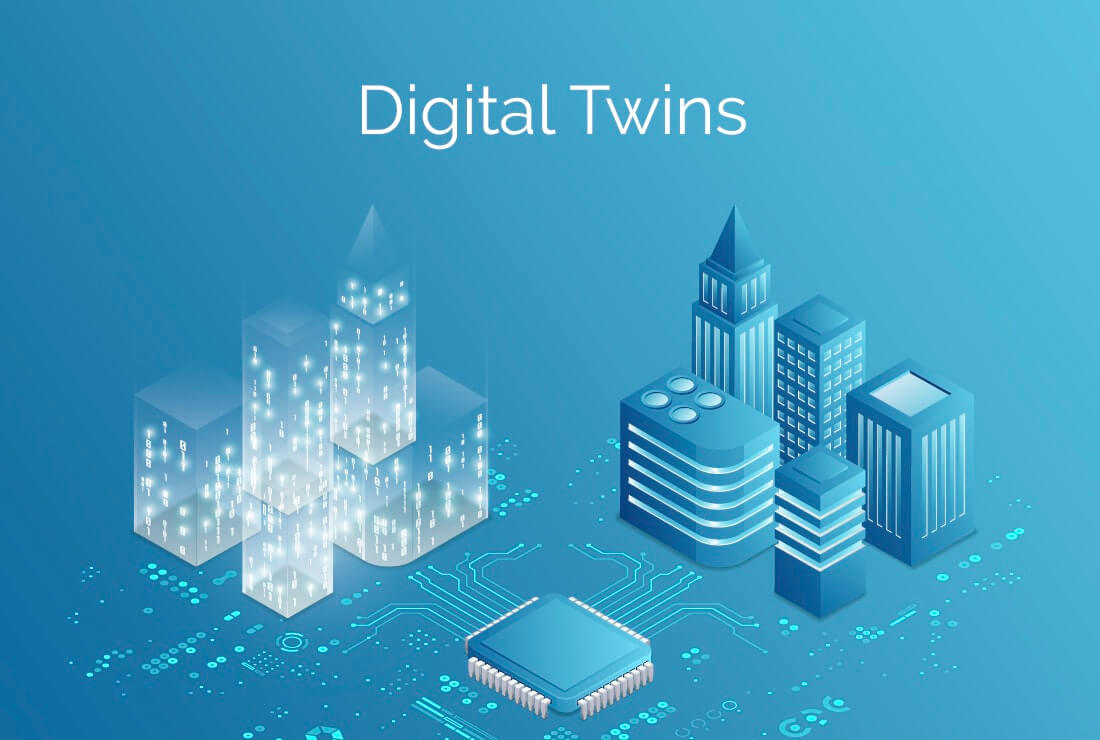Digital Twins
A digital twin is a virtual representation of a real-time digital counterpart of a physical object, process, or location. All the information and data about anything you want to copy is collected and created digitally to build these virtual models.
The digital twin is a fascinating idea and unquestionably one of the hottest technological trends. It creates digital models of real-world systems, processes, and objects by combining concepts like artificial intelligence (AI), the internet of things (IoT), the metaverse, virtual Reality (VR), and Augmented Reality (AR).
Digital twins aid in making difficult, expensive, or risky processes safer, more cost-effective, and more attainable. Digital Twins are being used in a wide range of applications by businesses worldwide, including digital agriculture, precision medicine, and the engineering design of intricate equipment. However, applications have been highly customized and have only been available for high-value use cases, such as jet engine operations, industrial facilities, and power plants.
With AWS IoT TwinMaker, leading technology companies like AWS are working hard to lower costs and make it easier for companies of all sizes to build their Digital Twins by making them easier and more accessible.
In recent years, some truly ground-breaking digital twins have been developed that are inspiring the industry and helping to push the boundaries of what is possible in various fields, including sports, engineering, science, medicine, pharmaceuticals, and engineering. Here are a few original and intriguing examples of digital twins.
The Human Brain
It is extremely difficult to create a digital twin of the human brain because the human brain is a complex organ. The Neurotwin project, supported by the European Union, aims to build models that can predict the most effective treatments for diseases like epilepsy and Alzheimer’s by simulating specific human brains. Neurotwin is the first project to focus on modeling the physiology and the brain’s electromagnetic activity. Other attempts to simulate aspects of the brain have been made. The model will be used in clinical trials starting in 2023.
An Entire Human
A digital twin can design individual treatments for each person when they get sick and show how their lifestyle choices affect their long-term health. It will be feasible to anticipate the impacts of various medications, giving knowledge into the best therapy choices assuming the individual is struck by conditions like malignant growth or Parkinson’s illness. Digital twins of humans will increase lifespans and reduce the amount of money wasted on unsuccessful treatment programs that never worked because of the patient’s genetics.
Los Angeles Transportation
The Open Mobility Foundation and the Los Angeles Department of Transportation have collaborated to develop a data-driven digital twin of the city’s transportation infrastructure. It will first model the movement and activity of micro-mobility solutions like the city’s shared-use bicycle and electric scooter network. After that, it will cover ride-sharing services, carpooling, and emerging new mobility options like autonomous taxi drones.
The Whole of Shanghai
The Shanghai Urban Operations and Management Center has created a digital twin of the 26 million-person city that models 100,000 elements, including e-bike charging infrastructure, road traffic, the size and location of apartment buildings, and refuse collection and disposal facilities. The living model was built by 51World, which uses data from satellites and drones to build it. Among other uses, it is helping the government plan for and respond to the Covid-19 pandemic. It can likewise mimic the impacts of cataclysmic events, for example, flooding, to help with reaction arranging.
A Sports Stadium
Sofi Stadium in Los Angeles has its digital twin that models the stadium and the 300-acre Hollywood Park campus that surrounds it. It was built while the stadium was being built. It combines real-time data from the park’s operations into a single platform to answer questions from event organizers looking to use the space for maintenance and janitorial operations. Through an “app store” model, users interact with the twin.
The World’s First 3D-Printed Bridge
The 12-meter steel bridge in central Amsterdam that spans the Oudezijds Achterburgwal canal is remarkable because it is the first pedestrian bridge built entirely using 3D printing. It has a digital twin. As part of a project led by the Turing Institute, a network of sensors is installed throughout the project. These sensors collect data for the twin, which is then used to analyze the project’s performance.
Conclusion
In this article, we discussed all the best examples of digital twins everyone should know along with the concept of digital twins. Hope this article has increased your knowledge regarding digital twins.
